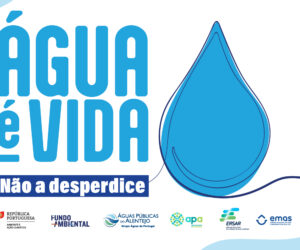 District of Beja are 3 cities, Beja, Moura and Serpa, and 23 vilas, 11 of which are county seats.
District of Beja are 3 cities, Beja, Moura and Serpa, and 23 vilas, 11 of which are county seats.
The proposal, do PS, had already been approved in general in the previous legislature, but the process started again, after the fall of the previous government, in 2021. Parliament approved on Friday in general, unanimously, a framework law project with the criteria for settlements to obtain town and city titles.
The proposal, do PS, had already been approved in general in the previous legislature, but the process started again, after the fall of the previous government, in 2021.
The diploma now goes on for discussion in the specialty at the Public Administration Commission, Spatial Planning and Local Government.
The need for a Framework Law for the Attribution of the Category of Settlements is justified by a legal void in this matter, since the previous law on the category of localities, of 1982, was revoked during the administrative reform of 2012.
The law under discussion intends to update the criteria for classifying locations as towns and cities, legitimizing the aspirations of the populations to see the evolution of their territory recognized, your identity marks, its equipment and local development, establishes the proposal.
The law intends to give villages that meet the criteria the opportunity to start the process to name themselves as a town or city..
Portugal has 159 settlements with the designation of city and 581 as a category of town.
BILL No. 231/XV/1st * APPROVES THE FRAMEWORK LAW ON THE ASSIGNMENT OF CATEGORY OF PEOPLE
So, are now considered indicative of regular civic and cultural activity and relevant local economic activity in the primary sectors, secondary and tertiary that can justify.
For elevation to village, the existence of, at least, two-thirds of the following categories of institutions or collective facilities: Public services of the central or local administration provided on a permanent basis to the population; Health Center; Pharmacy; social responses, particularly for seniors or people with disabilities; Historically rooted cultural or recreational associations; Sports hall or equipment for informal collective sports; Establishment providing postal services; catering establishments; Basic or secondary education establishment; bank branch; Public parks or gardens for public use and classified cultural heritage of public or municipal interest.
As for the cities, it is considered indicative of the presence of centers of intense urbanization the existence of, at least, two-thirds of the following categories of institutions or collective facilities: Public services of the central or local administration provided on a permanent basis to the population; Hospital services with emergency service or permanent care; fire brigade; Equipment of a cultural or artistic nature, namely auditorium, library, Cultural center, museum or interpretive center; Stadium or multi-sport sports park; tourist developments; Higher education establishments; Kindergartens or preschool education establishments; Coverage by collective public transport network; Coverage by cycle path network; Business or industrial park; Technological or research center; Parks or gardens for public use; Protected areas and classified cultural heritage of national interest.
























